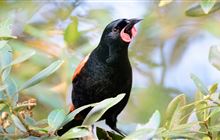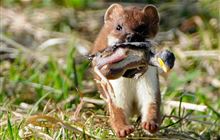Bold Predator Free project launched in Hawke’s Bay
Archived content: This media release was accurate on the date of publication.
Introduction
A project aimed at creating a Predator Free Hawke’s Bay has been launched in Napier with the announcement of a $1.6 million kick-start in funding from the Government.Date: 02 July 2018 Source: Hawkes Bay Regional Council.
Hawke’s Bay is the latest region to get behind the country’s goal to become Predator-Free by 2050.
The first phase of the $4.86 million project will focus on removing possums from 14,500 ha of land on Mahia Peninsula within four years, as an initial step towards ridding the region of predators.
The knowledge gained in Mahia will be used to develop a low-cost farmland control and eradication model applicable to other areas of the region and New Zealand.
Hawke’s Bay Regional Council is investing $1.17 million in the project and Chairman Rex Graham says eradicating possums from Hawke’s Bay is both ambitious and realistic.
“We believe we can reduce the cost of rural predator control by more than 50% through smart technology and project design, and with landowners’ help I’m confident we can remove them from our landscapes,” says Mr Graham.
Hawke’s Bay Regional Council Chief Executive James Palmer says the project fits with the council’s overarching goal of improving the region’s natural ecosystems and biodiversity and is reflected in the council’s long-term plan and proposed regional pest management plan.
“The regional council is committed to building strong partnerships and this project is all about working alongside iwi, local and national organisations and the Government to achieve common goals,” says Mr Palmer.
The project builds on the success of the Cape to City and Poutiri Ao ō Tāne projects, which have so far delivered more than 34,000 ha of innovative farmland control of possums, mustelids and wild cats, including wireless trap monitoring. An important element of these projects is the strong relationships that have been built with local iwi, as well as hundreds of landowners, schoolchildren and teachers.
Predator Free 2050 Limited Chief Executive Ed Chignell says predator control at Cape Sanctuary and the Maungaharuru range show how native seabirds, threatened land birds and unique wildlife like tuatara can return to the region once predators are removed.
“This project gets us started on the East Coast and enables new innovation and approaches that will be essential for our national predator free goal,” says Mr Chignell. Predator Free 2050 Limited was created in 2016 to enable co-funding arrangements with councils, philanthropists, businesses and other agencies for large landscape predator control and eradication projects and for breakthrough science.
The Predator Free Hawke’s Bay project is also receiving funding from Aotearoa Foundation, Manaaki Whenua/ Landcare Research, DOC, OMV NZ Ltd, Maungaharuru Tangitū, Zero Invasive Predators and farmers.
Last month Predator Free 2050 Limited announced funding for a predator-free project in Taranaki and the company expects to make further funding announcements in other parts of New Zealand over coming months.
Contact
Helen Shea, Principal Advisor - Communications
Hawkes Bay Regional Council
Phone: +64 6 833 8085
Mobile: +64 27 662 5953


